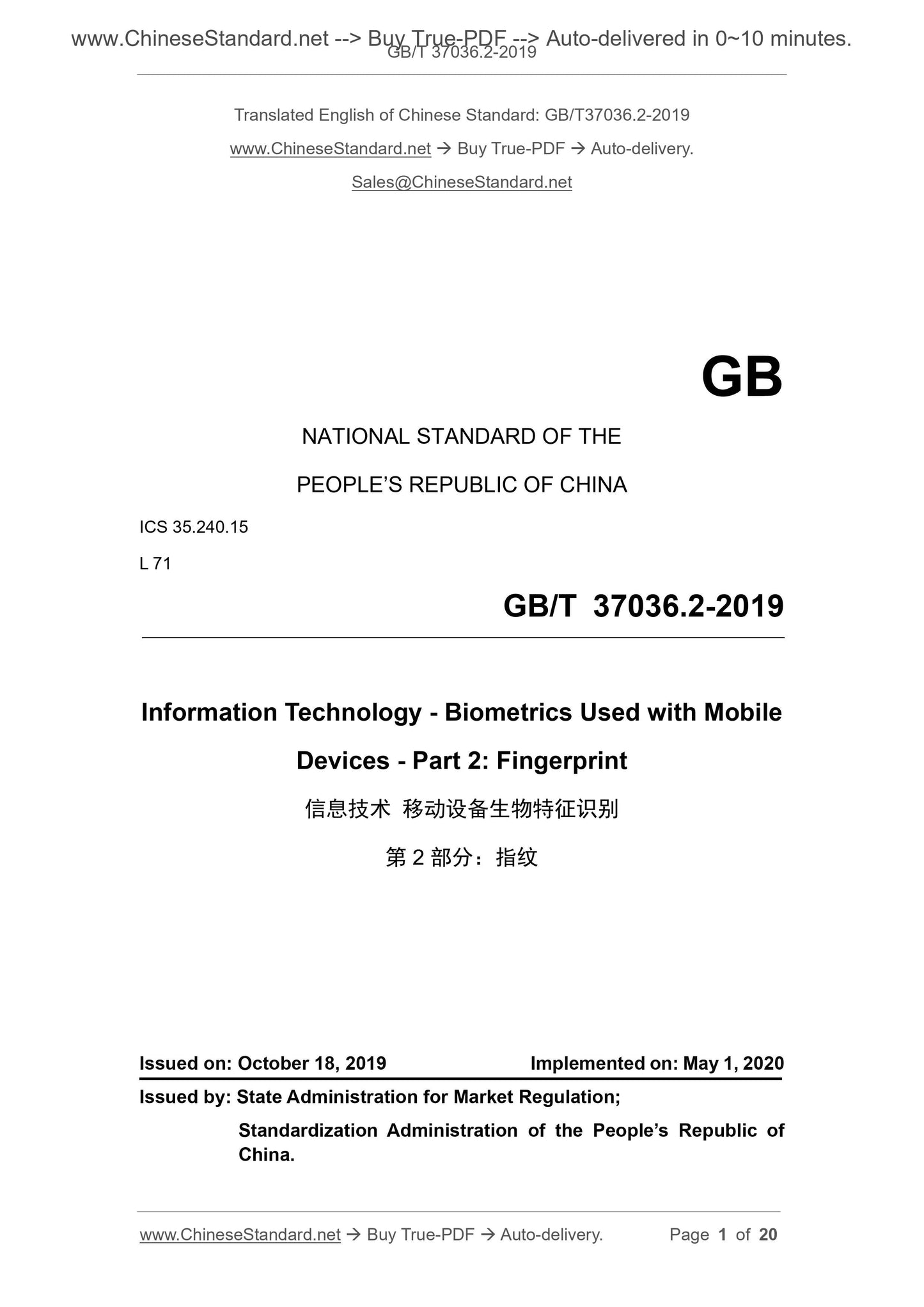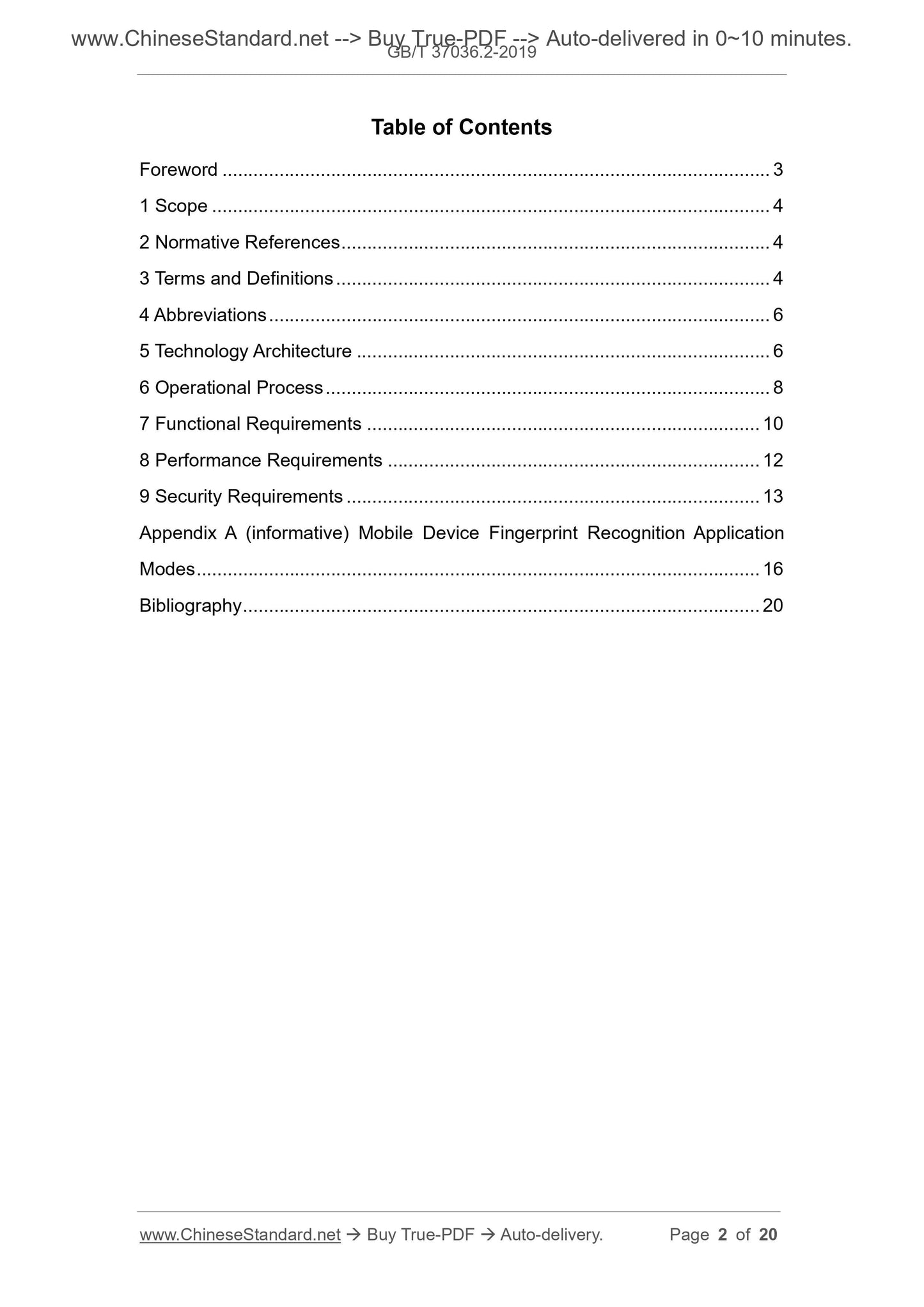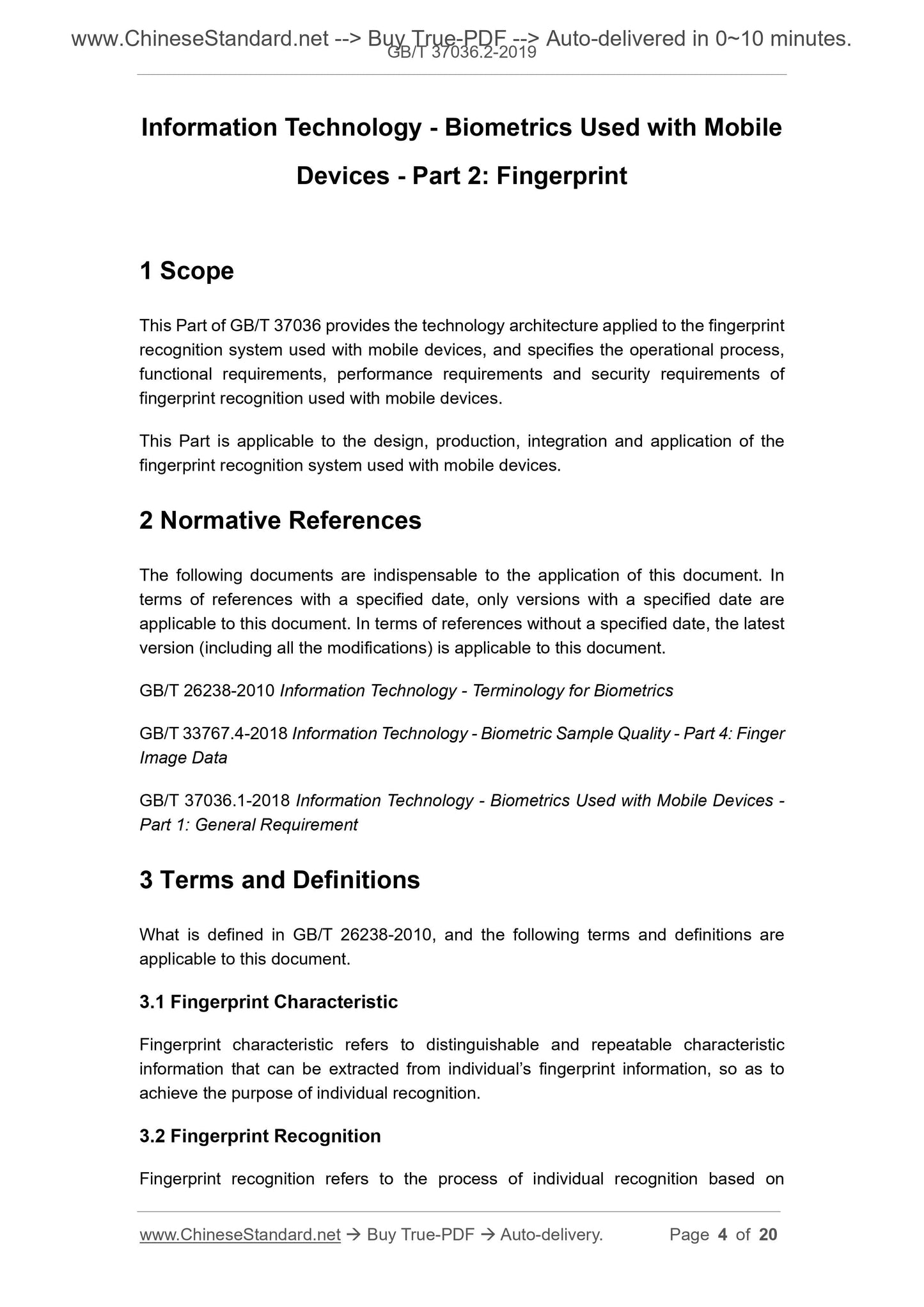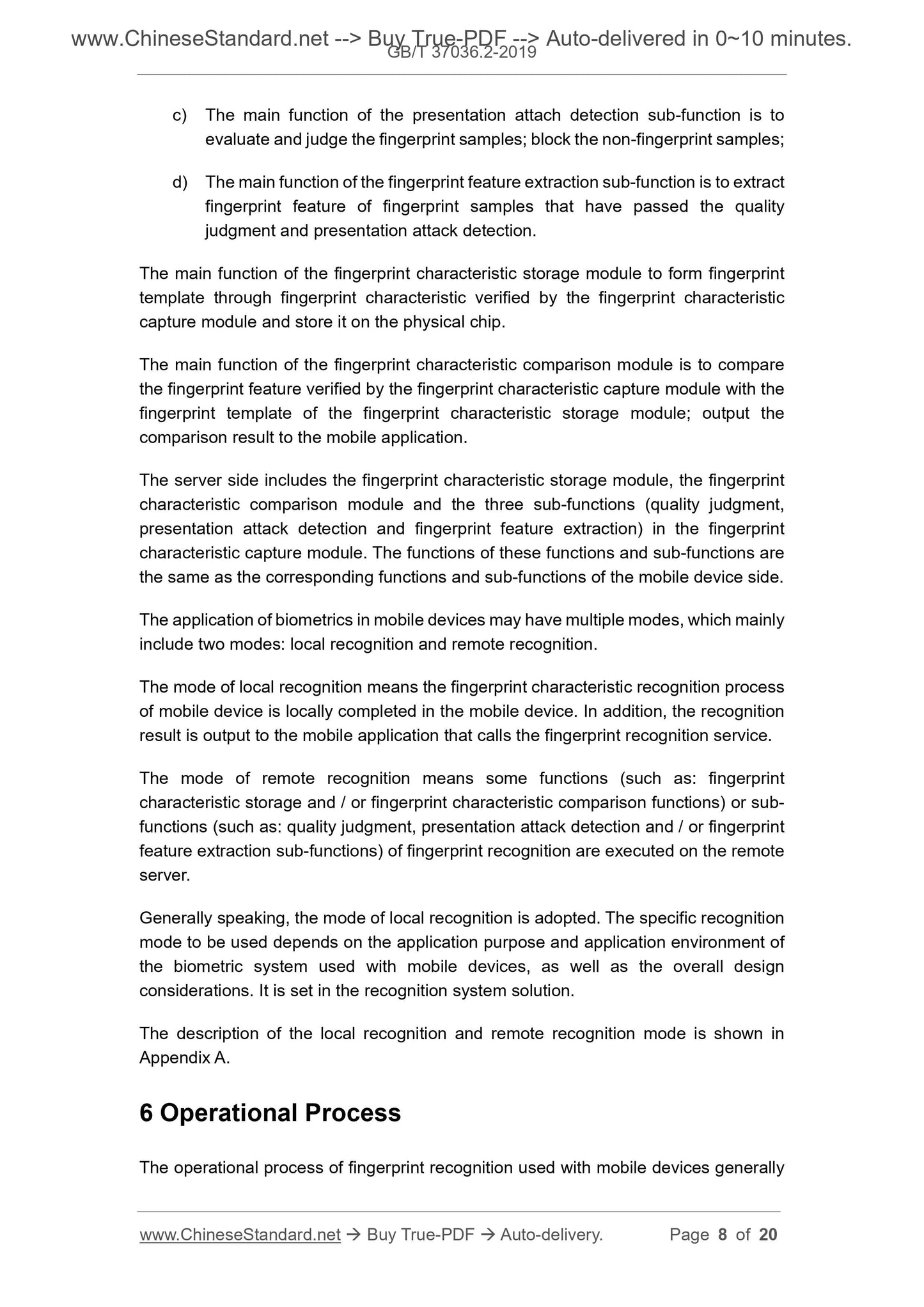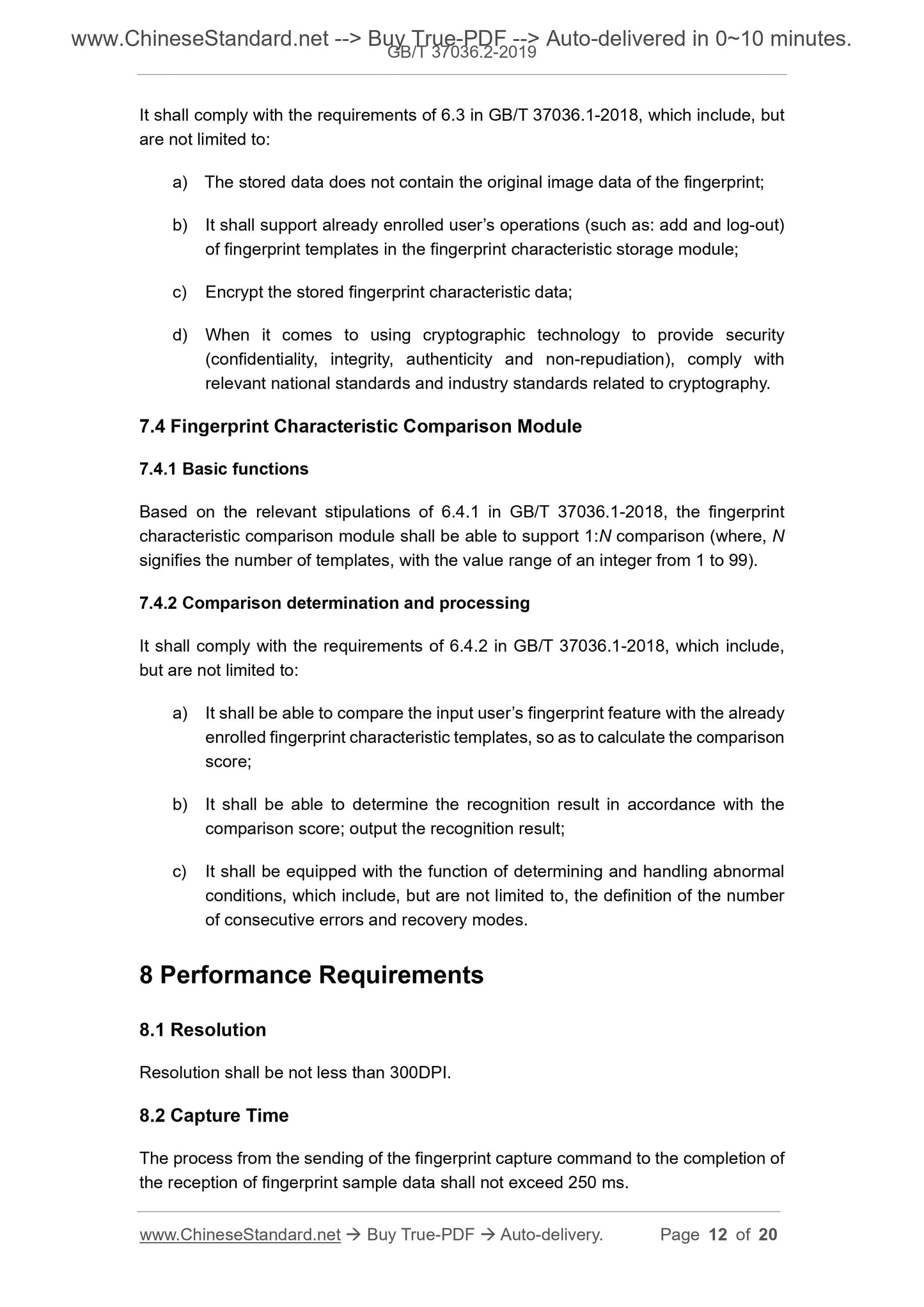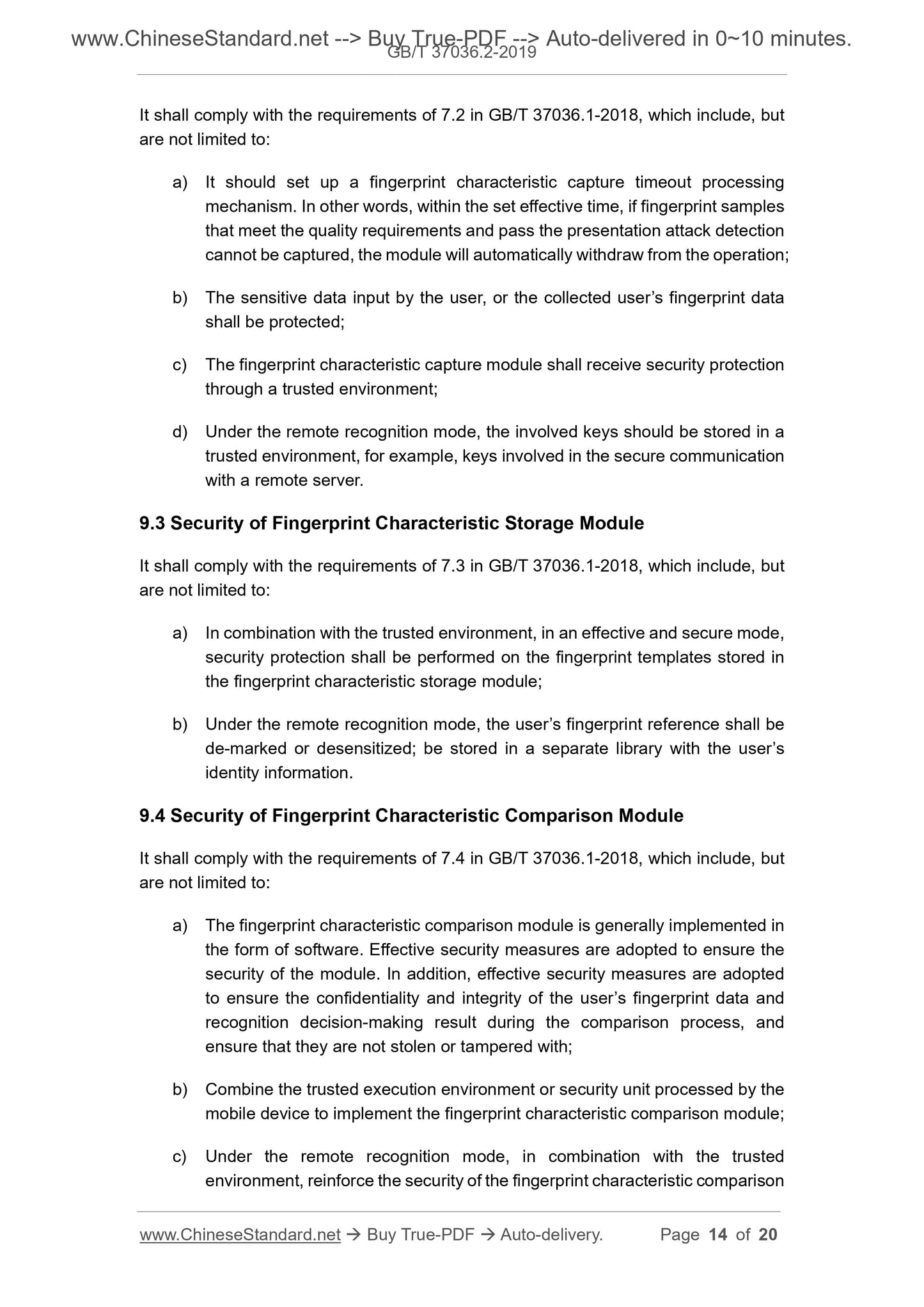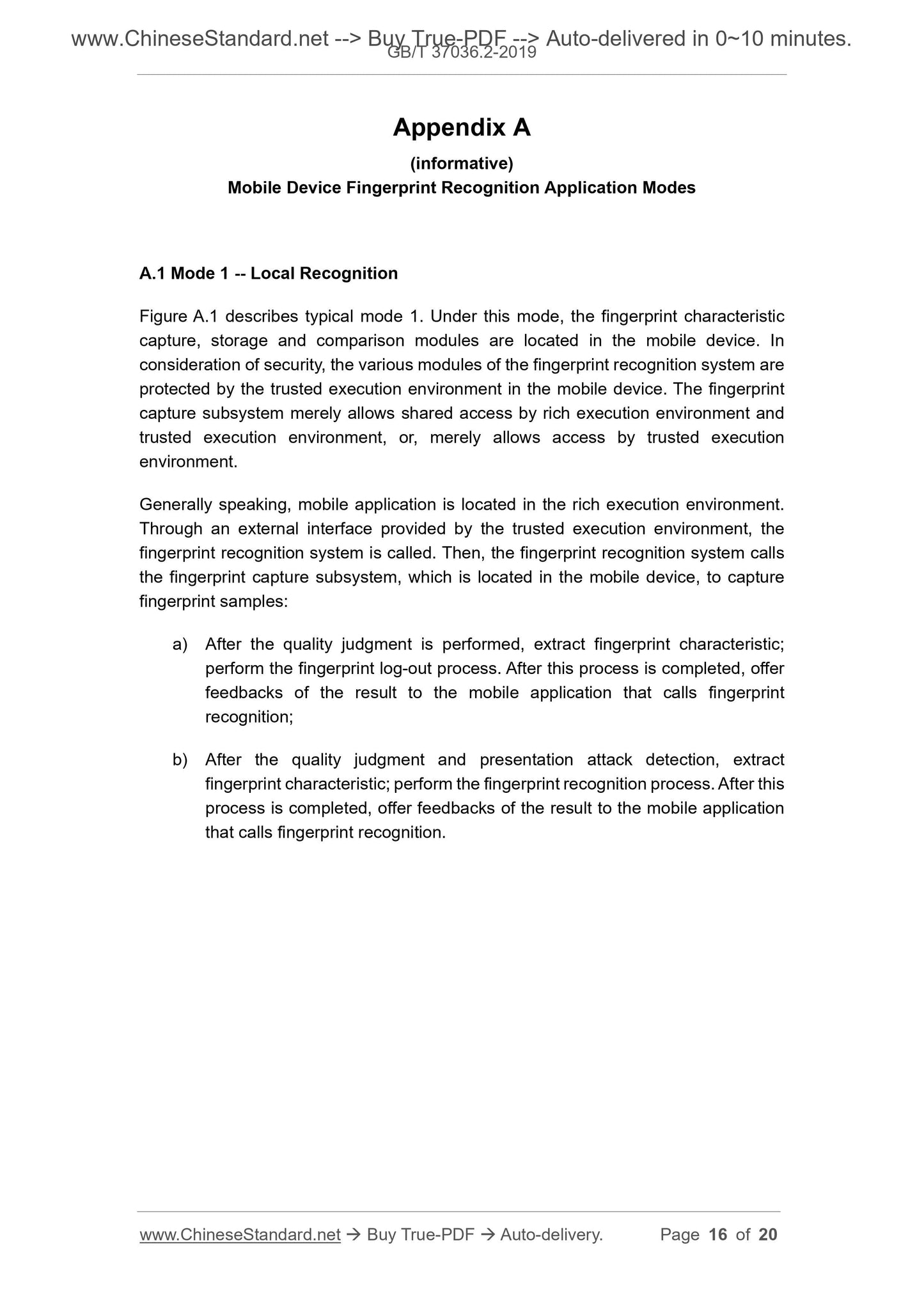1
/
of
8
www.ChineseStandard.us -- Field Test Asia Pte. Ltd.
GB/T 37036.2-2019 English PDF (GB/T37036.2-2019)
GB/T 37036.2-2019 English PDF (GB/T37036.2-2019)
Regular price
$190.00
Regular price
Sale price
$190.00
Unit price
/
per
Shipping calculated at checkout.
Couldn't load pickup availability
GB/T 37036.2-2019: Information Technology - Biometrics Used with Mobile Devices - Part 2: Fingerprint
Delivery: 9 seconds. Download (and Email) true-PDF + Invoice.Get Quotation: Click GB/T 37036.2-2019 (Self-service in 1-minute)
Newer / historical versions: GB/T 37036.2-2019
Preview True-PDF
Scope
This Part of GB/T 37036 provides the technology architecture applied to the fingerprintrecognition system used with mobile devices, and specifies the operational process,
functional requirements, performance requirements and security requirements of
fingerprint recognition used with mobile devices.
This Part is applicable to the design, production, integration and application of the
fingerprint recognition system used with mobile devices.
Basic Data
| Standard ID | GB/T 37036.2-2019 (GB/T37036.2-2019) |
| Description (Translated English) | Information Technology - Biometrics Used with Mobile Devices - Part 2: Fingerprint |
| Sector / Industry | National Standard (Recommended) |
| Classification of Chinese Standard | L71 |
| Classification of International Standard | 35.240.15 |
| Word Count Estimation | 14,175 |
| Date of Issue | 2019-10-18 |
| Date of Implementation | 2020-05-01 |
| Issuing agency(ies) | State Administration for Market Regulation, China National Standardization Administration |
Share
